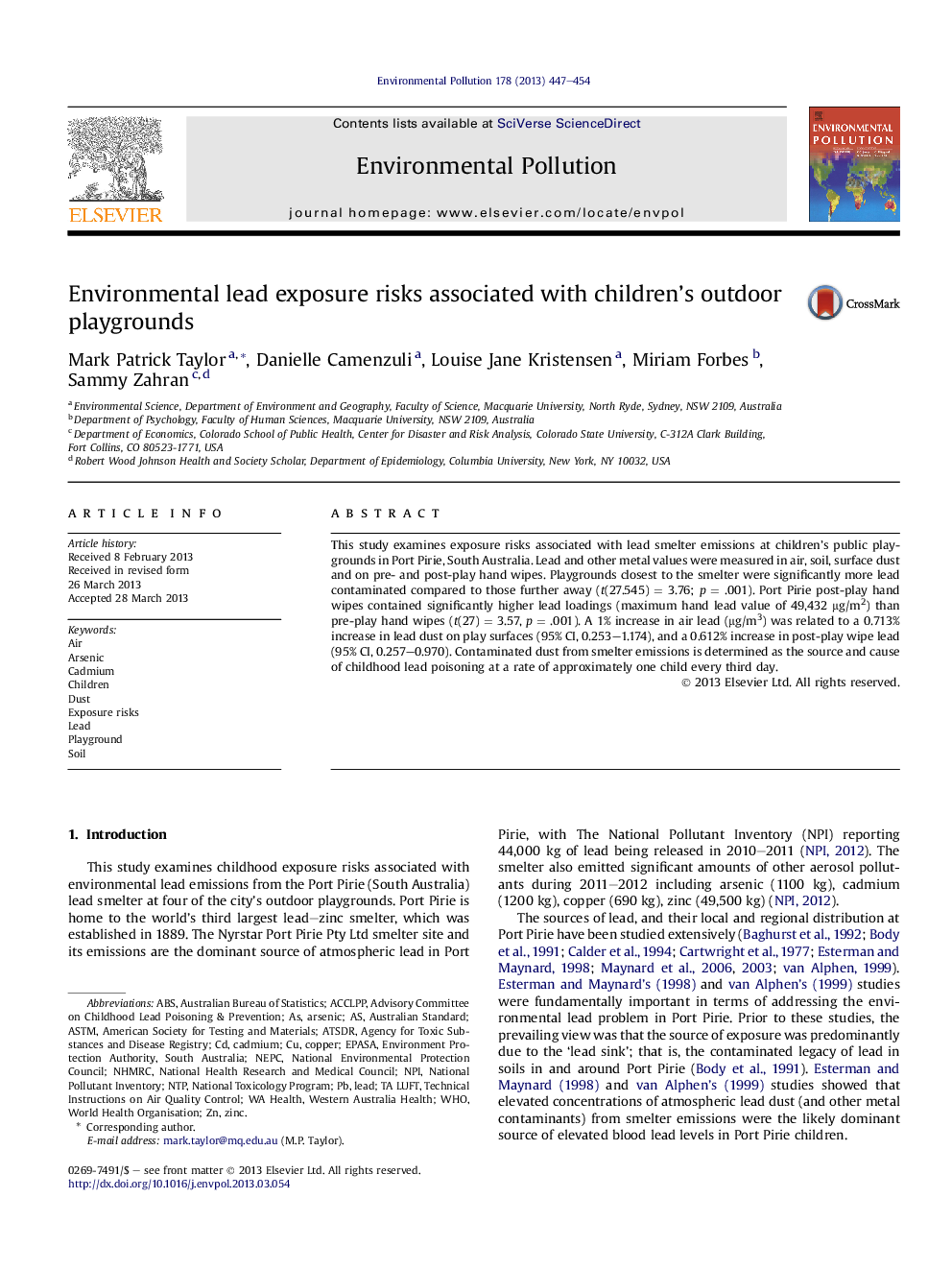| Article ID | Journal | Published Year | Pages | File Type |
|---|---|---|---|---|
| 6319006 | Environmental Pollution | 2013 | 8 Pages |
Abstract
This study examines exposure risks associated with lead smelter emissions at children's public playgrounds in Port Pirie, South Australia. Lead and other metal values were measured in air, soil, surface dust and on pre- and post-play hand wipes. Playgrounds closest to the smelter were significantly more lead contaminated compared to those further away (t(27.545) = 3.76; p = .001). Port Pirie post-play hand wipes contained significantly higher lead loadings (maximum hand lead value of 49,432 μg/m2) than pre-play hand wipes (t(27) = 3.57, p = .001). A 1% increase in air lead (μg/m3) was related to a 0.713% increase in lead dust on play surfaces (95% CI, 0.253-1.174), and a 0.612% increase in post-play wipe lead (95% CI, 0.257-0.970). Contaminated dust from smelter emissions is determined as the source and cause of childhood lead poisoning at a rate of approximately one child every third day.
Keywords
Related Topics
Life Sciences
Environmental Science
Environmental Chemistry
Authors
Mark Patrick Taylor, Danielle Camenzuli, Louise Jane Kristensen, Miriam Forbes, Sammy Zahran,
